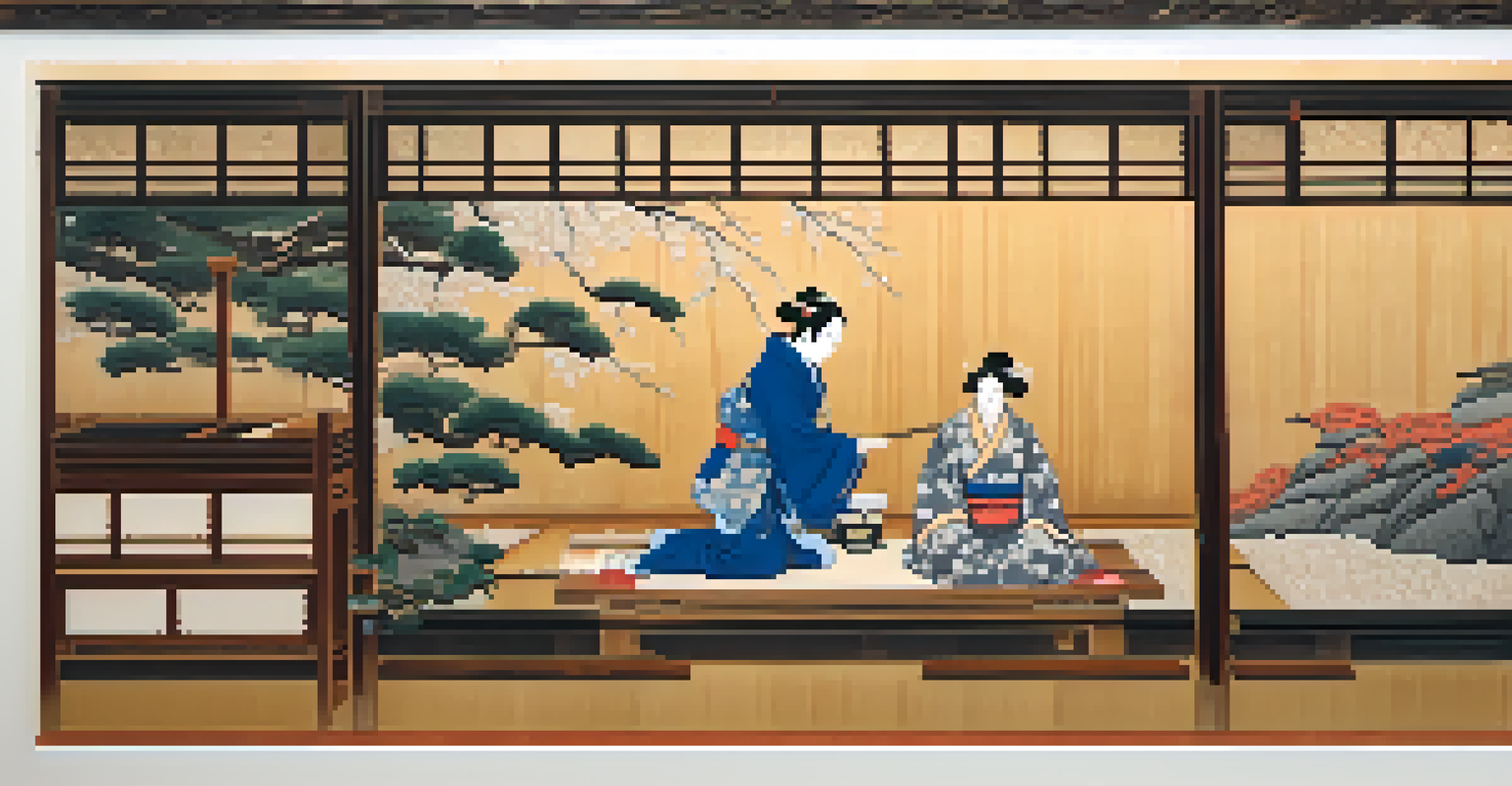Carving Techniques Around the World: A Cultural Overview

The Art of Wood Carving in Africa
In Africa, wood carving is not just an art form; it's a meaningful tradition that tells stories. Each region has its unique style, influenced by local culture and beliefs. For instance, the intricate masks of the Yoruba people serve both ceremonial purposes and artistic expression, showcasing their rich heritage.
Art is the most beautiful of all lies.
Craftspeople often use locally sourced woods like mahogany and ebony, which are prized for their durability and beauty. The techniques vary widely, from hand tools to modern machinery, but the essence remains the same: a deep respect for the materials and their significance. This blend of old and new keeps the craft alive and evolving.
Moreover, wood carving in Africa is a communal activity, often passed down through generations. Families gather to teach younger members, fostering a sense of identity and continuity. This tradition not only preserves cultural history but also strengthens community bonds.
Japanese Woodblock Printing Techniques
Japan is renowned for its ukiyo-e, or 'pictures of the floating world,' which are created using intricate woodblock printing techniques. This art form dates back to the 17th century and encapsulates scenes of landscapes, kabuki actors, and beautiful women. The meticulous process involves carving images into cherry wood blocks, which are then inked and pressed onto paper.

The precision of each carving is crucial, as the slightest mistake can ruin the entire print. Artists often collaborate with skilled carvers and printers, highlighting the importance of teamwork in traditional Japanese art. This collaborative approach not only enhances the quality of the work but also embeds cultural values into each piece.
Cultural Significance of Carving
Wood carving in various cultures serves as a meaningful tradition that reflects local heritage and community identity.
Furthermore, ukiyo-e serves as a reflection of Japanese aesthetics and philosophy, emphasizing simplicity and nature. As this technique continues to be practiced today, it connects modern artists to their historical roots, showcasing the enduring nature of cultural heritage.
Indigenous Carving Practices in North America
In North America, indigenous communities have long utilized carving as a means of storytelling and cultural expression. From totem poles of the Pacific Northwest to intricate masks of the Inuit, each piece carries significant meaning and history. These carvings often depict ancestral figures, animals, and spirits, serving as visual narratives that connect the community to their past.
The more I paint, the more I like everything.
The materials used are typically local, such as cedar or bone, and the techniques vary among tribes. Some may use hand tools while others incorporate more modern equipment, yet the focus remains on honoring tradition and the natural world. This adaptability ensures that the art form remains relevant and accessible to new generations.
Additionally, many indigenous artisans are now blending traditional methods with contemporary designs, creating a fusion that resonates with both old and new audiences. This evolution reflects a broader understanding of cultural identity, allowing for the preservation of heritage while embracing innovation.
Carving in European Traditions: A Historical Overview
Europe boasts a rich history of carving, particularly in the realms of sculpture and furniture design. From the Roman era's grand statues to the intricate woodwork of the Renaissance, carving has played a pivotal role in showcasing craftsmanship and artistic expression. Each era brought its own style, influenced by cultural shifts and technological advancements.
For example, Gothic architecture featured elaborate wooden altarpieces, while Baroque designs emphasized grandeur and detail. Artisans often trained for years, mastering techniques that required both skill and patience. This dedication to craftsmanship is evident in the quality and intricacy of their work, which still captivates viewers today.
Revival of Traditional Techniques
There is a growing interest in preserving traditional carving methods as artisans seek to connect with their cultural roots.
In contemporary Europe, traditional carving techniques continue to thrive alongside modern innovations. Artists blend historical methods with contemporary themes, ensuring that the art form evolves while paying homage to its roots. This dynamic interplay of old and new highlights the ongoing relevance of carving in European culture.
Sculpture Techniques in South America
South America is home to diverse carving techniques that reflect its rich cultural tapestry. From the ancient Nazca lines to contemporary stone sculptures, carving has been a vital form of expression for various civilizations. In countries like Peru, artisans often carve intricate designs into stone, showcasing their cultural narratives through art.
The techniques employed vary significantly across regions, influenced by indigenous practices and colonial histories. For instance, the intricate carvings of the Quechua people often depict animals and plants, symbolizing their deep connection to nature. This focus on the environment highlights the importance of sustainability in traditional carving practices.
Today, many South American artists are reviving these ancient techniques while infusing them with modern interpretations. This blend of tradition and innovation fosters a renewed appreciation for cultural heritage, allowing for the continuation of these practices in a contemporary context.
Asian Stone Carving Traditions
Stone carving has a long and storied history in Asia, with techniques that vary from region to region. In China, jade carving is particularly revered, as jade is seen as a symbol of purity and moral integrity. Artisans spend years perfecting their skills to create delicate pieces that often blend artistic beauty with spiritual significance.
Similarly, in India, intricate carvings adorn temples and palaces, showcasing a blend of architectural brilliance and artistic expression. These carvings often depict mythological scenes and deities, serving both decorative and narrative purposes. The precision and detail involved highlight the deep cultural beliefs that inform the craft.
Collaboration in Art Forms
Many carving practices involve collaboration among artists, emphasizing teamwork and cultural values in the creation process.
As globalization influences artistic practices, many Asian artisans are embracing contemporary themes while retaining traditional techniques. This fusion not only honors the past but also invites new interpretations, ensuring that stone carving remains a vibrant part of Asian culture.
The Revival of Traditional Carving Techniques
In recent years, there's been a resurgence of interest in traditional carving techniques across the globe. Many artisans are now focusing on preserving and reviving age-old methods that were at risk of fading away. This revival is driven by a growing appreciation for handmade crafts and a desire to connect with cultural roots.
Workshops and educational programs are popping up, allowing younger generations to learn these techniques firsthand. This hands-on approach not only provides valuable skills but also fosters a deeper understanding of cultural heritage. As artisans share their knowledge, they contribute to a sense of community and continuity.

Moreover, the digital age is playing a significant role in this revival, as social media platforms allow artisans to showcase their work to a global audience. This exposure encourages collaboration and innovation, merging traditional craftsmanship with modern aesthetics. Ultimately, the revival of traditional carving techniques enriches cultural diversity and ensures that these practices endure for future generations.